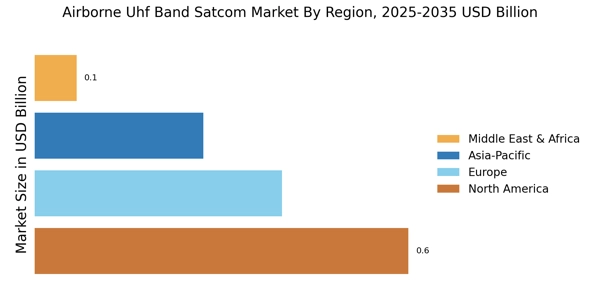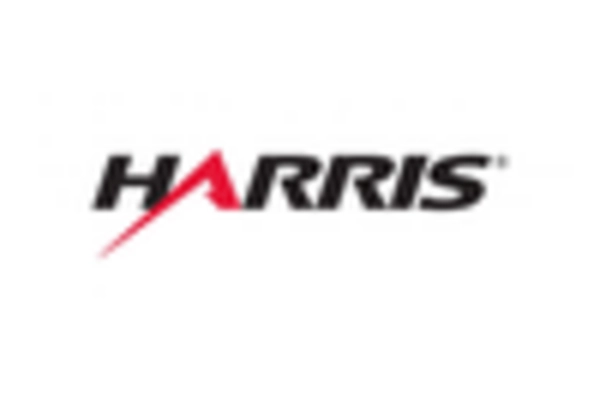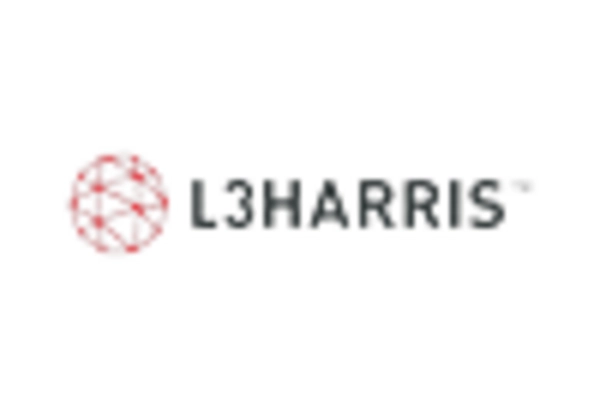Technological Innovations
Technological innovations play a pivotal role in shaping the Airborne Uhf Band Satcom Market. Advancements in satellite technology, such as the development of high-throughput satellites and miniaturized communication equipment, are enhancing the capabilities of airborne systems. These innovations enable higher data rates and improved signal quality, which are essential for modern military and commercial operations. The introduction of software-defined radios and advanced modulation techniques further contributes to the efficiency of airborne satellite communications. As these technologies continue to evolve, they are expected to drive the growth of the Airborne Uhf Band Satcom Market, providing users with more robust and flexible communication solutions.
Increased Military Expenditure
The Airborne Uhf Band Satcom Market is experiencing a notable surge in demand due to increased military expenditure across various nations. Governments are prioritizing the enhancement of their defense capabilities, which includes investing in advanced communication systems. For instance, The Airborne Uhf Band Satcom Market is projected to reach approximately USD 30 billion by 2025, with a significant portion allocated to airborne systems. This trend indicates a robust growth trajectory for the Airborne Uhf Band Satcom Market, as military forces seek reliable and secure communication channels for operations in diverse environments. The emphasis on real-time data transmission and situational awareness further propels the need for sophisticated airborne satellite communication solutions.
Emerging Commercial Applications
The Airborne Uhf Band Satcom Market is witnessing a shift as commercial applications for satellite communications expand. Industries such as aviation, maritime, and emergency services are increasingly adopting airborne satellite communication systems to enhance operational efficiency. For example, the aviation sector is projected to invest heavily in satellite communications, with estimates suggesting a market growth rate of around 10% annually. This growth is driven by the need for continuous connectivity and data exchange, particularly in remote areas where traditional communication infrastructure is lacking. As commercial entities recognize the value of reliable airborne communication, the Airborne Uhf Band Satcom Market is likely to benefit from this diversification of applications.
Rising Demand for Secure Communications
The need for secure communications is increasingly influencing the Airborne Uhf Band Satcom Market. With the rise in cyber threats and geopolitical tensions, both military and commercial sectors are prioritizing secure communication channels. The demand for encrypted satellite communications is on the rise, as organizations seek to protect sensitive information from potential breaches. This trend is particularly evident in defense applications, where secure communication is critical for mission success. The Airborne Uhf Band Satcom Market is likely to see growth as manufacturers develop advanced encryption technologies and secure communication protocols to meet these demands, ensuring that users can operate safely in contested environments.
Regulatory Support for Satellite Communications
Regulatory support is a crucial driver for the Airborne Uhf Band Satcom Market. Governments and international organizations are increasingly recognizing the importance of satellite communications for national security and economic development. Initiatives aimed at streamlining regulatory processes for satellite launches and operations are emerging, which could facilitate market entry for new players and technologies. For instance, regulatory bodies are working to allocate frequency bands more efficiently, thereby reducing interference and enhancing communication reliability. This supportive regulatory environment is expected to foster innovation and investment in the Airborne Uhf Band Satcom Market, ultimately leading to a more competitive landscape.


















Leave a Comment